
Ghent Altarpiece like a giant book with pictures. To fully appreciate the grandeur and importance of the work, you must first become familiar with the meaning that it contains. All scenes and figures are provided with carefully executed inscriptions in Latin, on the frames, heraldic ribbons, architectural elements and robes.
Subjects are divided into twenty-four episodes, each of which is enclosed in a flat frame. Although some of episodes divided by another additional section altar still comprises twelve sectors both in the open and in the closed state. At first glance, the design of the altar looks disproportionate, but the geometric and technical analysis shows the integrity of its design. This is not a polyptych, which sections were performed at different times and at first intended for other works, as it is often assumed initially.
The altar was a part of the internal situation of the first radial southern chapel of the Church of St. John the Baptist in Ghent. The construction of the chapel was started with money Iodokusa Wade and his wife Elizabeth Borlyut. Iodokus Wade was an influential politician of Ghent, who had ties with the court of Burgundy.
Construction of the chapel accompanied by the establishment of a daily Mass, “in honor of the Lord, the Holy Mother of God and all the saints” for the salvation of souls and the founders of the chapel of their ancestors, as the couple had no children. The document was drawn up May 13, 1435 in the presence of representatives of the city magistrate and the church committee. So this is not an epitaph: Iodokus Wade and his wife were buried separately in another monastery.
The original name of the chapel was complicated synthesis of the Christian doctrine of salvation and collect donations during a church service.
In the left corner – the characters of the Old Testament patriarchs and prophets with books in which they predict the coming of the Savior; behind them are the famous “good” pagans. Laurelled man in white similar to Virgil. Behind him can be seen princes and generals on horseback: they fulfill their Christian duty, as a righteous judge, and the soldiers of Christ.
In 1934 fold with the image of judges he has been kidnapped, and it was replaced by a modern replica. To the right of the Lamb arranged characters from the New Testament. Kneeling figure in gray robes – the apostles; behind them are their successors, energetic leaders of the Church. It prelates and priests led by three popes, all dressed in red as a sign of his martyrdom. For the church hierarchy is followed by all the other martyrs of the male sex. In the right pane shows the hermits, including two women: Mary Magdalene and Mary of Egypt. This is followed by pilgrims, accompanied by his patron St. Christopher.
Once above the altar was a stone arch. We can imagine him by two paintings PF de Notter, written at the beginning of the XIX century. The presence of the dome made affinity with the sacred altar of the building complete. Perhaps the Holy Communion was located in cancer between the two tiers. Double sash each tier can be folded individually, like a harmonica. As the section with the image of the Lord, the top side flaps were initially rectangular, the upper curvature were added later.
Painting shows an outstanding selection of material and technical skill performance. The figures are depicted with previously unattainable naturalism, and this was supposed to make a lasting impression on his contemporaries. Particularly striking were to appear, Adam and Eve, as well as angels, in the words of people who can guess the tone of the song.
The work has brought Van Eyku, an instant international recognition. If Robert Campin was a great innovator in the development of realistic painting on boards, his younger contemporary art first developed a system in which a detailed picture materialistic objects were not an obstacle to unite them together and incorporate them into a plausible space, obeying the laws of nature. As Kampen, van Eyck is no longer competed with sculptors, except for the use of visual effects. He found that the main function of colors – light transmission.
With van Eykom thing of the past three-dimensional space as a sign, a concept or a formula that characterized all early painting. His Adoration of the Lamb – a tableau in which the Lord, the angels, Adam and Eve, the Lamb, the Pope, the prophets, the good wife, the riders, the trees, the grass, the flowers, the air, the precious stones and the building filled with the same outstanding craftsmanship. They belong to the same world and a crystal seem equally real.
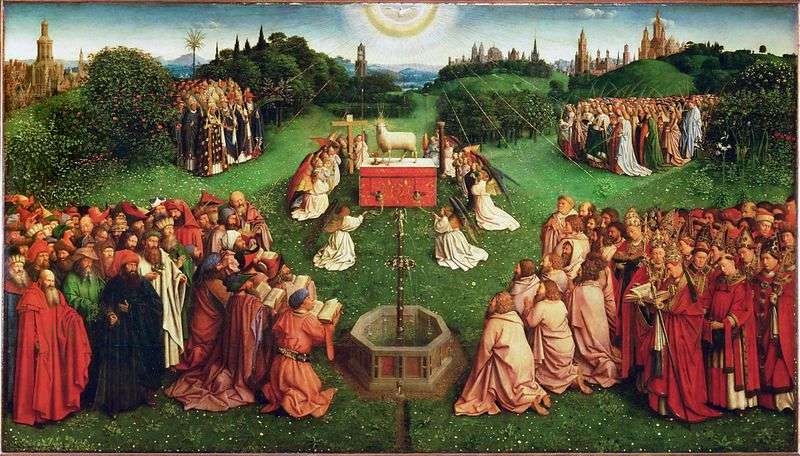 The Ghent Altar Worship of the Lamb by Jan van Eyck
The Ghent Altar Worship of the Lamb by Jan van Eyck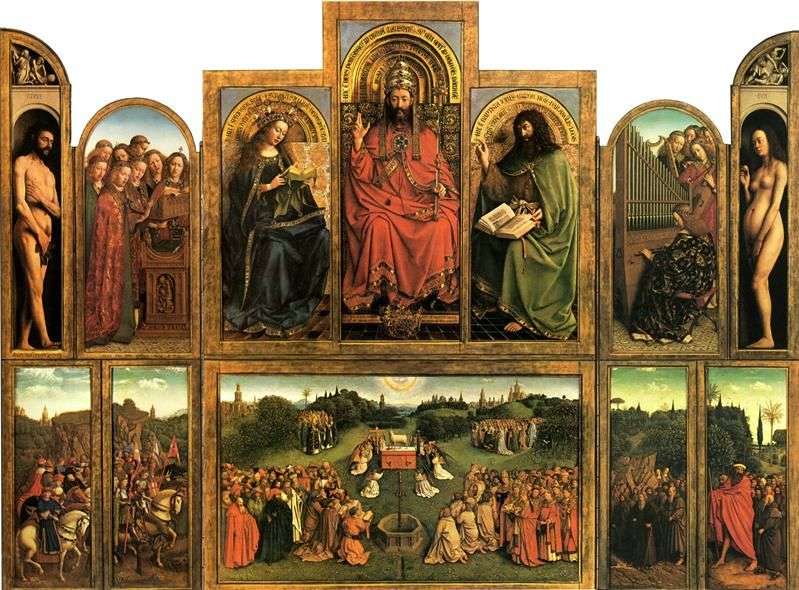 Ghent altar by Jan van Eyck
Ghent altar by Jan van Eyck Ghent altar in the Cathedral of St. Bavo by a kind of closed altar – Joddes Vaid
Ghent altar in the Cathedral of St. Bavo by a kind of closed altar – Joddes Vaid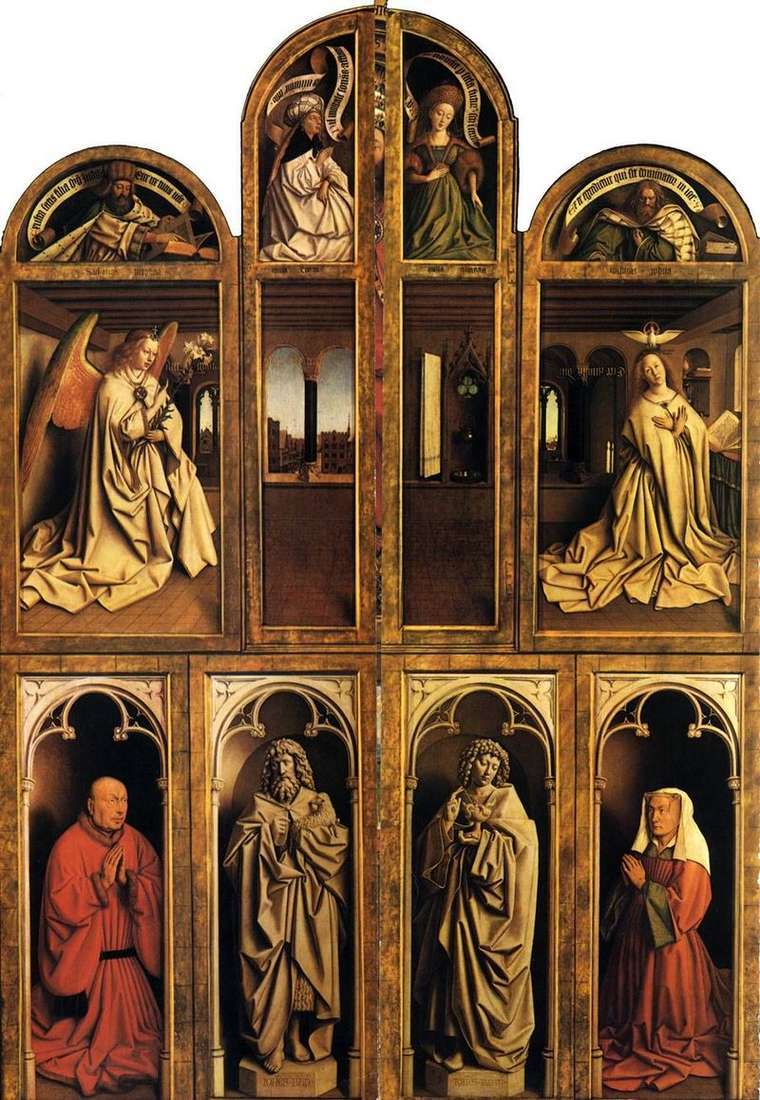 Ghent altar in the closed state by Jan van Eyck
Ghent altar in the closed state by Jan van Eyck Ghent Altar by A Kind of Open Altar – Jan van Eyck
Ghent Altar by A Kind of Open Altar – Jan van Eyck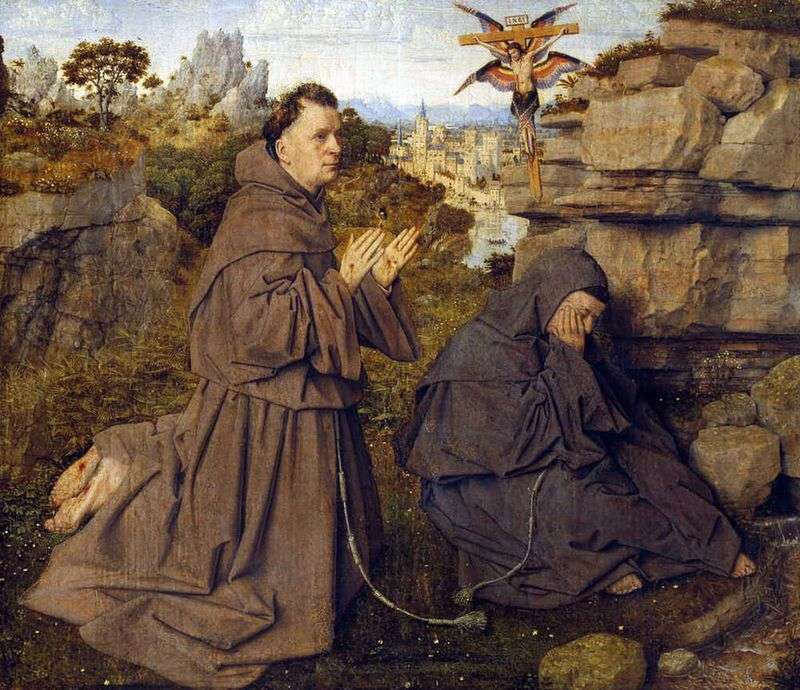 Stigmatization of St. Francis by Jan van Eyck
Stigmatization of St. Francis by Jan van Eyck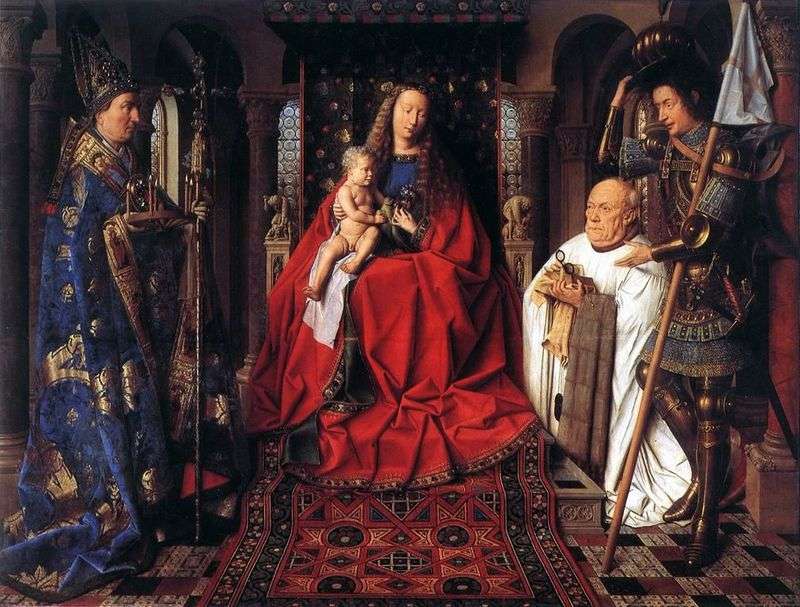 Madonna of the canon van der Palet by Jan van Eyck
Madonna of the canon van der Palet by Jan van Eyck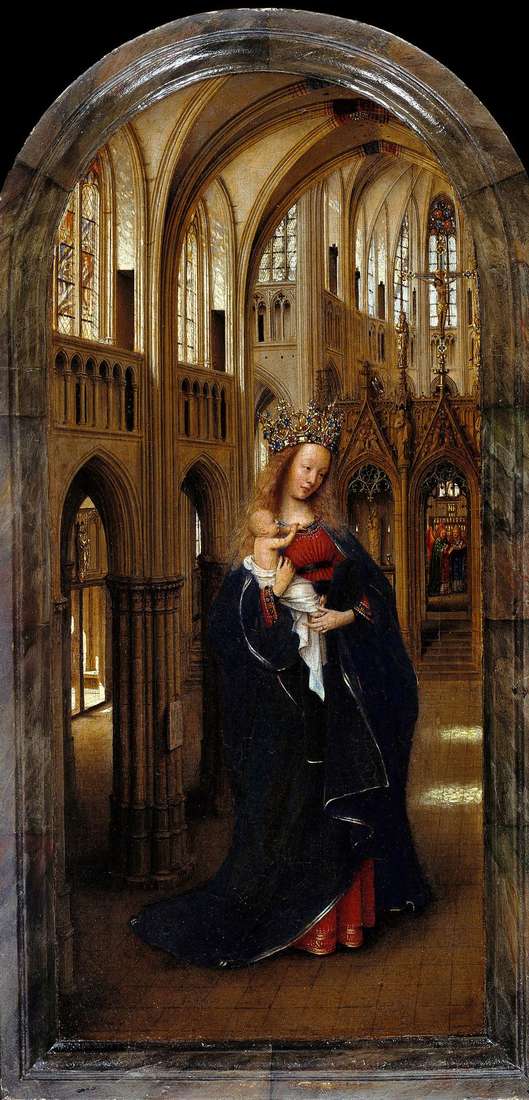 Madonna in the church by Jan van Eyck
Madonna in the church by Jan van Eyck